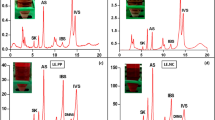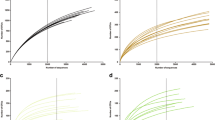Abstract
Aims
Loline alkaloids produced by Epichloë spp. are known to deter feeding by insect herbivores while also serving as a significant carbon source for certain epiphytic bacteria on tall fescue leaves. In this study we examined the role of loline alkaloids in attracting certain bacteria to the rhizosphere of tall fescue plants that harbor loline producing fungal endophytes.
Methods
Population studies were used to compare the fitness of known loline catabolizing strains to other rhizosphere bacteria. Pyrosequencing of 16S rRNA fragments compared the composition of bacterial communities inhabiting the endophyte infected tall fescue (Festuca arundinacea) rhizosphere to those of endophyte free fescue plants.
Results
Rhizosphere population studies demonstrated that loline catabolizing strains Burkholderia ambifaria 7R and Pseudomonas aureofaciens outcompete and suppress the growth of non-loline catabolizing strains. Pyrosequencing of 16S rRNA fragments showed greater percentages of certain plant growth promoting bacteria in rhizosperes seeded with B. ambifaria 7R than non-inoculated soils. Rhizospheres of endophyte infected plants showed higher species richness (Shannon diversity index = 4.03) over endophyte free rhizospheres (Shannon diversity index = 3.08) and a greater percentage of Firmicutes.
Conclusions
The differences in microbial community composition between endophyte-infected and endophyte-free rhizospheres suggest that the presence of fungal endophytes influences microbial community structure. Loline alkaloid production may be one proxy by which the fungal endophyte shapes microbial communities, as evidenced by increased fitness of loline catabolizing bacteria in the tall fescue rhizosphere.





Similar content being viewed by others
References
Bacon CW (1993) Abiotic stress tolerances (moisture, nutrients) and photosynthesis in endophyte infected tall fescue. Agric Ecosyst Environ 44:123
Bacon CW, White JF (2003) Evidence for nematode defense in symbiotic grasses. In: White J, Bacon C, Hywel-Jones H, Spatafora J (eds) Clavicipitalean fungi. Marcel Dekker, New York, pp 549–569
Bais HP, Weir TL, Perry LG, Gilroy S, Vivanco JM (2006) The Role of root exudates in rhizosphere interactions with plants and other organisms. Ann Rev Plant Biol 57:233–66
Berendsen R, Pieterse C, Bakker P (2012) The rhizosphere microbiome and plant health. Trends Plant Sci 17:478–86
Bultman TL, Bell G, Martin WD (2004) A fungal endophyte mediates reversal of wound-induced resistance and constrains tolerance in a grass. Ecology 85:679–685
Capone KA, Dowd SE, Stamatas GN, Nikolovski J (2011) Diversity of the human skin microbiome early in life. J Investig Dermatol 131(10):2026–2032
Coenye T, Mahenthiralingam E, Henry D, LiPuma JJ, Laevens S, Gillis M, Speert DP, Vandamme P (2001) Burkholderia ambifaria sp. nov., a novel member of the Burkholderia cepacia complex including biocontrol and cystic fibrosis-related isolates. Int J Syst Evol Microbiol 51:1481–1490
Coenye T, Vandamme P (2003) Diversity and significance of Burkholderia species occupying diverse ecological niches. Environ Microbiol 5:719–729
DeSantis TZ, Hugenholtz P, Larsen NMR, Brodie EL, Keller K, Huber T, Dalevi D, Hu P, Andersen GL (2006) Greengenes, a chimera-checked 16S rRNA gene database and workbench compatible with ARB. Appl Environ Microbiol 72:5069–5072
Dinis JM, Barton DE, Jamsheed G, Surendar D, Reddy K, Valsquez F, Chaffee C, Lee M-C, Gavrilova H, Ozuna H, Smits S, Ouverney C (2011) In search of an uncultured human-associated TM7 bacterium in the environment. PLos ONE 6(6), e21280. doi:10.1371/journal.pone.0021280
Dowd SE, Callaway TR, Wolcott RD, Susn Y, McKeehan T, Hagevoort RG, Edrington TS (2008a) Evaluation of the bacterial diversity in the feces of cattle using 16S rDNA bacterial tag-encoded FLX amplicon pyrosequencing (bTEFAP). BMC Microbiol 8:125
Dowd SE, Sun Y, Wolcott RD, Domingo A, Carroll JA (2008b) Bacterial tag-encoded FLX amplicon pyrosequencing (bTEFAP) for microbiome studies: bacterial diversity in the ileum of newly weaned Salmonella-infected pigs. Foodborne Pathog Dis 5(4):459–472
Edgar RC (2010) Search and clustering orders of magnitude faster than BLAST. Bioinformatics 26(19):2460–2461
Eren AM, Zozaya M, Taylor CM, Dowd SE, Martin DH, Ferris MJ (2011) Exploring the diversity of Gardnerella vaginalis in the genitourinary tract microbiota of monogamous couples through subtle nucleotide variation. PLoS One 6(10), e26732
Haichar FZ, Marol C, Berge O, Rangel-Castro JI, Prosser JI, Balesdent J (2008) Plant host habitat and root exudates shape soil bacterial community structure. ISME J 2(12):1221–1230
Hanada A, Kurogi T, Minh Giang N, Yamada T, Kamimoto Y, Kiso Y, Hiraishi A (2014) Bacteria of the candidate phylum TM7 are prevalent in acidiophilic nitrifying sequencing batch-reactors. Microbes Environ. doi:10.1264/jsme2.ME14052
Hayat R, Safdar A, Amara U, Halid R, Ahmed I (2010) Soil Beneficial bacteria and their role in plant growth promotion: a review. Ann Microbiol. doi:10.1007/s13213-010-0117-1
Kimmons CA, Gwinn KD, Bernard EC (1990) Nematode reproduction on endophyte infected and endophyte-free tall fescue. Plant Dis 74:757–761
Leuchtmann A, Bacon CW, Schardl CL, White JF, Tadych M (2014) Nomenclatural realignment of Neotyphodium species with genus Epichloë. Mycologia 106(2):202–215
Li W, Roberts DP, Dery PD, Meyer SLF, Lohrke S, Lumsden RD, Hebbar K (2002) Broad spectrum anti-biotic activity and disease suppression by the potential biocontrol agent Burkholderia ambifaria BC-F. Crop Prot 21:129–135
Mahenthiralingam E, Song L, Sass A, White J, Wilmont C, Marchbank A, Boaisha O, Paine J, Knight D, Challis GL (2011) Enacyloxins are products of an unusual hybrid modular polyketide synthase encoded by a cryptic Burkholderia ambifaria Genomic Island. Chem Biol 18(5):665–677
Marasco R, Rolli E, Ettoumi B, Gianpiero V, Mapelli F, Borin S, Abou-Hadid AF, El-Behairy UA, Sorlini C, Cherif A, Zocchi G, Daffonchio D (2012) A drought resistance-promoting microbiome Is selected by root system under desert farming. PLoS ONE 7(10), e48479. doi:10.1371/journal.pone.0048479
Nagabhyr P, Dinkins RD, Wood CL, Bacon CW, Schardl CL (2013) Tall fescue endophyte effects on tolerance to water-deficit stress. BMC Plant Biol 13:127
Neal AL, Ahmad S, Gordon-Weeks R, Ton J (2012) Benzoxazinoids in Root Exudates of Maize Attract Pseudomonas putida to the Rhizosphere. PLoS ONE 7(4): e35498
Oger PM, Mansouri H, Nesme X, Dessaux Y (2004) Engineering root exudation of Lotus toward the production of two novel carbon compounds leads to the selection of distinct microbial populations in the rhizosphere. Microb Ecol 47(1):96–103
Patchett B, Chapman R, Fletcher L, Gooneratne S (2008) Root loline concentration in endophyte infected meadow fescue (Festuca pratensis) is increased by grass grub (Costelytra zealandica) attack. N Z Plant Prot 61:210–214
Roberts EL, Lindow SE (2014) Loline alkaloid production by fungal endophytes of Fescue species select for particular epiphytic bacterial microflora. ISME J 8:359–368
Sayer ST, Burch G, Sarathchandra S (2004) The impact of tall fescue (Festuca arundinacea) endophyte (Epichloë spp.) on non-target soil micro-organisms. N Z Plant Prot 57:329–336
Schardl C, Moon CD (2003) Processes of species evolution in Epichloë/Epichloë endopytes of grasses. In: White JF Jr, Bacon CW, Hywel-Jones NL, Spatafora JW (eds) Clavicipitalean fungi: evolutionary biology, chemistry. Biocontrol and Cultural Impacts. Marcel Dekker, New York, pp 255–289
Sigler WV, Nakatsu CH, Reicher ZJ, Turco RF (2001) Fate of the biological control agent Pseudomonas aureofaciens TX-1 after application to turfgrass. Appl Environ Microbiol 67(8):3542–3548
Sullivan TJ, Rodstrom J, Vandop J, Librizzi J, Graham C, Schardl CL, Bultman TL (2007) Symbiont-mediated changes in Lolium arundinaceum inducible defenses: evidence from changes in fene expression and leaf composition. New Phytol 176(3):673–679
Swanson KS, Dowd SE, Suchodolski JS, Middelbos IS, Vester BM, Barry KA, Nelson KE, Torralba M, Henrisat B, Coutinho PM, Cann IKO, White BA, Fahey GC Jr (2011) Phylogenetic and gene-centric metagenomics of the canine intestinal microbiome reveals similarities with humans and mice. ISME J 5(4):639–649
Tadych M, Bergen MS, White JF (2014) Epichloë spp. Associated with grasses: new insights on life cycles, dissemination and evolution. Mycologia 106(2):181–201
Vidaver AK, Lambrecht PA (2004) Bacteria as plant pathogens. Plant Health Instr. doi:10.1094/PHI-I-2004-0809-01
Wilson M, Lindow SE. (1993) Interactions between the biological control agent P. fluorescens A506 and Erwinia amylovora in pear blossoms. Phytopathology 83:117–123
Wilson M, Savka MA, Hwang I, Farrand SK, Lindow SE (1995) Altered epiphytic colonization of mannityl opine-producing transgenic tobacco plants by a mannityl opine-catabolizing strain of Pseudomonas syringae. Appl Environ Microbiol 61:2151–2158
Acknowledgments
This research was partially funded by a National Science Foundation Grant No: 1237624, and Connecticut State internal grant funding schemes. Special thanks to Dr. James F. White Jr. for reviewing this manuscript.
Author information
Authors and Affiliations
Corresponding author
Additional information
Responsible Editor: Yoav Bashan.
Rights and permissions
About this article
Cite this article
Roberts, E.L., Ferraro, A. Rhizosphere microbiome selection by Epichloë endophytes of Festuca arundinacea . Plant Soil 396, 229–239 (2015). https://doi.org/10.1007/s11104-015-2585-3
Received:
Accepted:
Published:
Issue Date:
DOI: https://doi.org/10.1007/s11104-015-2585-3




